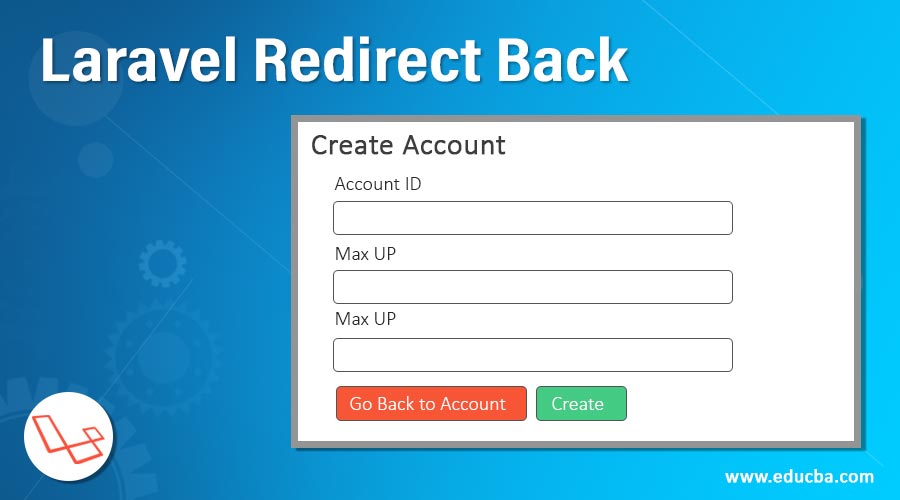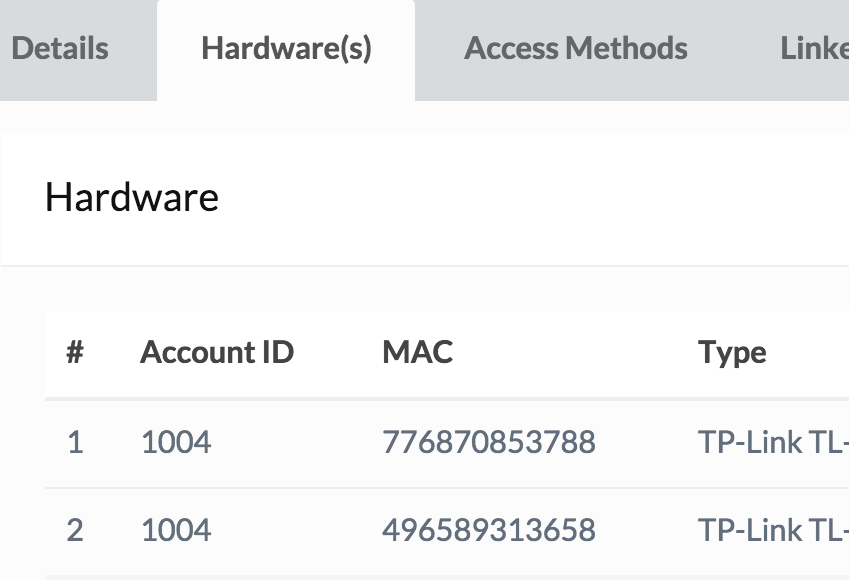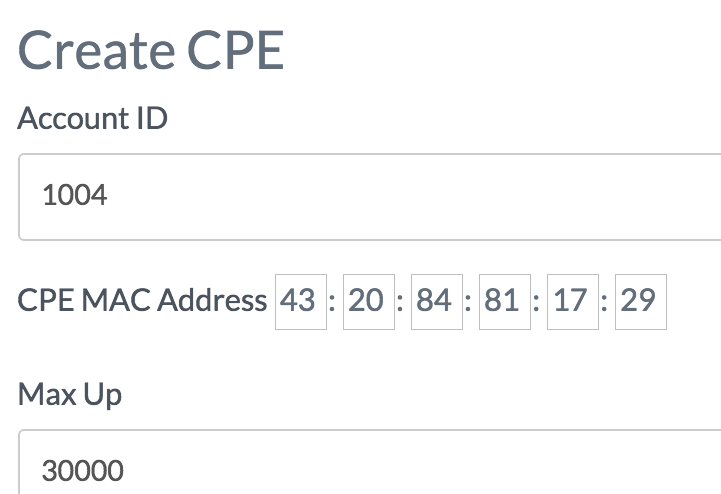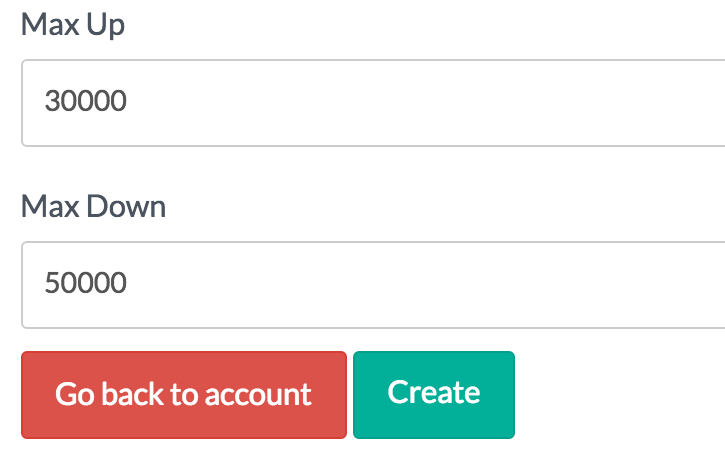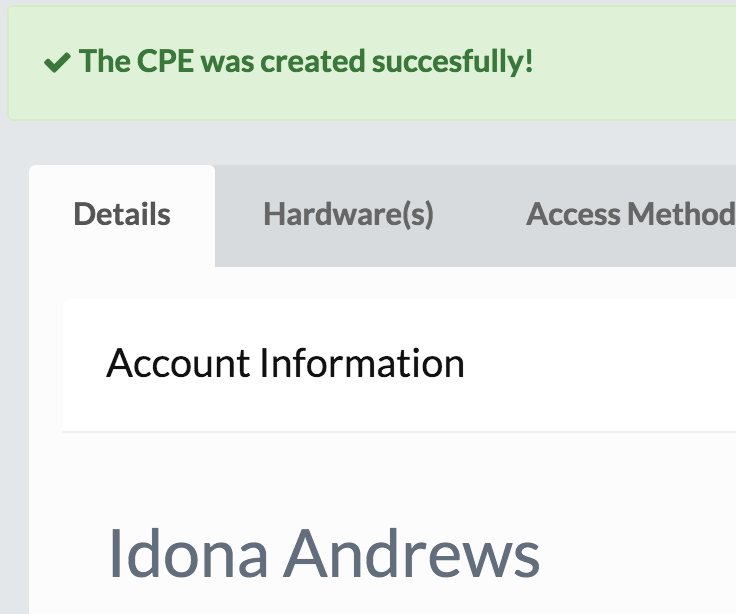laravel return redirect back
HTTP Redirects
Creating Redirects
Redirect responses are instances of the Illuminate\Http\RedirectResponse class, and contain the proper headers needed to redirect the user to another URL. There are several ways to generate a RedirectResponse instance. The simplest method is to use the global redirect helper:
Sometimes you may wish to redirect the user to their previous location, such as when a submitted form is invalid. You may do so by using the global back helper function. Since this feature utilizes the session, make sure the route calling the back function is using the web middleware group or has all of the session middleware applied:
Redirecting To Named Routes
When you call the redirect helper with no parameters, an instance of Illuminate\Routing\Redirector is returned, allowing you to call any method on the Redirector instance. For example, to generate a RedirectResponse to a named route, you may use the route method:
If your route has parameters, you may pass them as the second argument to the route method:
Populating Parameters Via Eloquent Models
If you are redirecting to a route with an «ID» parameter that is being populated from an Eloquent model, you may pass the model itself. The ID will be extracted automatically:
If you would like to customize the value that is placed in the route parameter, you should override the getRouteKey method on your Eloquent model:
Redirecting To Controller Actions
You may also generate redirects to controller actions. To do so, pass the controller and action name to the action method:
If your controller route requires parameters, you may pass them as the second argument to the action method:
Redirecting With Flashed Session Data
Redirecting to a new URL and flashing data to the session are usually done at the same time. Typically, this is done after successfully performing an action when you flash a success message to the session. For convenience, you may create a RedirectResponse instance and flash data to the session in a single, fluent method chain:
You may use the withInput method provided by the RedirectResponse instance to flash the current request’s input data to the session before redirecting the user to a new location. Once the input has been flashed to the session, you may easily retrieve it during the next request:
After the user is redirected, you may display the flashed message from the session. For example, using Blade syntax:
Все о WEB программировании
WEB программирование от А до Я
Заказать сайт:
Социальные сети:




Партнеры:
Redirect (перенаправление) в Laravel 5

Очень часто нам приходится перенаправлять пользователя на другую страницу или действие ( action), например при неверно введенных данных в форме вернуть пользователя обратно.
Простое перенаправление
Например нам надо перенаправить пользователя на страницу page, http://website.loc/page
Или перенаправим пользователя на страницу авторизации http://website.loc/auth/login
Перенаправление на предыдущую страницу
Например, пользователь ввел неверные данные в форму и отправил форму. После проверки мы выявили ошибки и нам необходимо перенаправить пользователя обратно на эту форму:
Перенаправление с данными
Как в примере приведенном выше, при неверно введенных данных мы хотим перенаправить пользователя обратно на форму, но при этом вывести сообщение «Неверно введены данные»
А в самом представлении (view) формы поймать это сообщение при помощи сессии:
Мы можем применять несколько методов with(), например:
Но удобней в этом случае использовать массив:
Если мы перенаправляем пользователя обратно на форму, то мы можем перенаправить со старыми значениями для этого используем метод withInput()
А данные в форме мы можем получить данные используя функцию old(‘key’).
Перенаправление на именованный роут.
Например у нас есть именованный роут:
Мы хотим перенаправить пользователя на данное действие не по ссылке, а по имени данного роута.
Данный способ очень удобен. Если в дальнейшем мы захотим изменить структуру URL, то нам необходимо только подкорректировать файл route.php.
Если роут содержит параметр или группу параметров:
То мы можем использовать редирект на именованный роут:
Редирект на контролер и действие
Иногда необходимо перенаправить пользователя на конкретный метод контролера не используя URL. Для этого мы можем использовать полный путь к методу:
Также мы можем передать параметры, просто добавив их в массив:
Laravel Redirect Back
By 
Introduction to Laravel Redirect Back
Laravel framework is one of the most robust frameworks that has taken the virtual world by storm. The reasons are plenty. The Laravel Framework is scalable and more importantly is expressive. This helps the developer to spend little time in creating functions. It also has a vast library to choose from and hence has the requisite flexibility.
Because of these reasons, the Laravel framework is sought after by clients owning e-commerce sites. The Ecommerce business by its very nature is demanding. Newer functionalities have to be created at the quickest possible time to provide better services to consumers. Because Laravel is easy to use the platform, this nature of support is possible. It is also the same reason why the coding community is excited about it.
Web development, programming languages, Software testing & others
A prime example would be the expression Redirect Back (). Its primary task is to return the user to an earlier page, which may or may not be the source. The redirect back code is helpful in websites where one has to log in for access. If the login is successful then the user will be taken forward and if it is not, then the user will be redirected to the login page or any other page. The Redirect back () should not be confused with return (), which ideally returns the user to the previous step. Redirect is akin to a detour while Return () is the previous page, in most cases.
Examples of Laravel Redirect Back
Below is a function concerning the Store.
Code:
The below concerns the design:
Output:
A few other quick coding examples.
return redirect()->route(‘users’, [1]);
return redirect()->action(‘App\Http\Controllers\UserController@index’, [‘id’ => 1]);
return redirect(‘home’)->with(‘message’, ‘Welcome to ExpertPHP Tutorials!’);
One of the good things about the redirect () command line is that it can be added with any other command lines or be a part of a series of commands.
It can take the user to myriad pages after the end of an action. Apropos to the examples that we did come across. This is not just limited to e-commerce sites but is available to every other page.
One of the best examples of the redirect back() command line is the registration page or the subscription page of a website. Once a user tries to access the website, he or she will be taken to the registration or the subscription page. On this page, the user will have to fill in a form and submit. On submission, he or she will be redirected to the first page of the website or whichever page the user was in. The redirect command is primarily used to provide a sense of sequence to the website or functionality. It should also not be mistaken that a redirect page is only valid for a website and not functionality.
As the above example has illustrated, a database too can be provided with the same functionality.
The redirect back() has quite a few modifications. One of them being simply redirected (). This more or less does the same thing. It takes the user back to the page or circumstance mentioned in the parameters. The redirect back() can be encapsulated with the return() command line and be used with added parameters. The redirect back() can also be enmeshed with a message. This can be an error message or a message signaling completion of an action. Messages in command lines provide a sense of direction. The command line will then redirect the user to the previous step and ask him or her to retry the step again.
It is imperative to remember that the redirect responses are from the Illuminate\Http\RedirectResponse. This class requires the proper headers for redirection. As we have seen from the above examples, the easiest way to use the redirect command line is to use the global redirect assistant.
It would look something like this:
Route::get(‘dashboard’, function () <
return redirect(‘home/dashboard’);
>);
The other manifestation of this command line is the return back:
Route::post(‘user/profile’, function () <
// Validate the request.
return back()->withInput();
>);
This command line is taking the help of the global back assistant.
These global assistants are known as such since they can be enmeshed with any other command line. They work in every circumstance and provide the same result. Also, one can input parameters to customize their actions. If one is using the Eloquent model while trying to route with an ID, then the developer may use the model itself. This will lead to the ID being extracted automatically. Showing of a message is also called “flashed session data”. Here a message is flashed and the redirecting happens, all at the same time. Laravel does provide the developer with enormous options to choose from to make light of the work.
Conclusion
The redirect back() command line is one of the numerous command lines that developers use to create easy functionalities. These command lines are expressive enough to provide numerous modifications as per the demand of the situation. All these sets the Laravel framework apart from the others.
Recommended Articles
This is a guide to Laravel Redirect Back. Here we also discuss the introduction of laravel redirect back along with different examples and its code implementation. you may also have a look at the following articles to learn more –
All in One Software Development Bundle (600+ Courses, 50+ projects)
Laravel Framework Russian Community
Prologue
Getting Started
Architecture Concepts
The Basics
Frontend
Security
Digging Deeper
Database
Eloquent ORM
Testing
Official Packages
HTTP Redirects
Creating Redirects
Redirect responses are instances of the Illuminate\Http\RedirectResponse class, and contain the proper headers needed to redirect the user to another URL. There are several ways to generate a RedirectResponse instance. The simplest method is to use the global redirect helper:
Sometimes you may wish to redirect the user to their previous location, such as when a submitted form is invalid. You may do so by using the global back helper function. Since this feature utilizes the session, make sure the route calling the back function is using the web middleware group or has all of the session middleware applied:
Redirecting To Named Routes
When you call the redirect helper with no parameters, an instance of Illuminate\Routing\Redirector is returned, allowing you to call any method on the Redirector instance. For example, to generate a RedirectResponse to a named route, you may use the route method:
If your route has parameters, you may pass them as the second argument to the route method:
Populating Parameters Via Eloquent Models
If you are redirecting to a route with an «ID» parameter that is being populated from an Eloquent model, you may pass the model itself. The ID will be extracted automatically:
If you would like to customize the value that is placed in the route parameter, you should override the getRouteKey method on your Eloquent model:
Redirecting To Controller Actions
You may also generate redirects to controller actions. To do so, pass the controller and action name to the action method. Remember, you do not need to specify the full namespace to the controller since Laravel’s RouteServiceProvider will automatically set the base controller namespace:
If your controller route requires parameters, you may pass them as the second argument to the action method:
Redirecting With Flashed Session Data
Redirecting to a new URL and flashing data to the session are usually done at the same time. Typically, this is done after successfully performing an action when you flash a success message to the session. For convenience, you may create a RedirectResponse instance and flash data to the session in a single, fluent method chain:
After the user is redirected, you may display the flashed message from the session. For example, using Blade syntax:
HTTP Responses
Basic Responses
Returning Strings From Routes
The most basic response from a Laravel route is a string:
Creating Custom Responses
However, for most routes and controller actions, you will be returning a full Illuminate\Http\Response instance or a view. Returning a full Response instance allows you to customize the response’s HTTP status code and headers. A Response instance inherits from the Symfony\Component\HttpFoundation\Response class, providing a variety of methods for building HTTP responses:
For convenience, you may also use the response helper:
Note: For a full list of available Response methods, check out its API documentation and the Symfony API documentation.
Sending A View In A Response
If you need access to the Response class methods, but want to return a view as the response content, you may use the view method for convenience:
Attaching Cookies To Responses
Method Chaining
Keep in mind that most Response methods are chainable, allowing for the fluent building of responses:
Redirects
Redirect responses are typically instances of the Illuminate\Http\RedirectResponse class, and contain the proper headers needed to redirect the user to another URL.
Returning A Redirect
There are several ways to generate a RedirectResponse instance. The simplest method is to use the redirect helper method. When testing, it is not common to mock the creation of a redirect response, so using the helper method is almost always acceptable:
Returning A Redirect With Flash Data
Redirecting to a new URL and flashing data to the session are typically done at the same time. So, for convenience, you may create a RedirectResponse instance and flash data to the session in a single method chain:
Redirecting To The Previous URL
You may wish to redirect the user to their previous location, for example, after a form submission. You can do so by using the back method:
Returning A Redirect To A Named Route
When you call the redirect helper with no parameters, an instance of Illuminate\Routing\Redirector is returned, allowing you to call any method on the Redirector instance. For example, to generate a RedirectResponse to a named route, you may use the route method:
Returning A Redirect To A Named Route With Parameters
If your route has parameters, you may pass them as the second argument to the route method.
If you are redirecting to a route with an «ID» parameter that is being populated from an Eloquent model, you may simply pass the model itself. The ID will be extracted automatically:
Returning A Redirect To A Named Route Using Named Parameters
Returning A Redirect To A Controller Action
Similarly to generating RedirectResponse instances to named routes, you may also generate redirects to controller actions:
Returning A Redirect To A Controller Action With Parameters
Returning A Redirect To A Controller Action Using Named Parameters
Other Responses
The response helper may be used to conveniently generate other types of response instances. When the response helper is called without arguments, an implementation of the Illuminate\Contracts\Routing\ResponseFactory contract is returned. This contract provides several helpful methods for generating responses.
Creating A JSON Response
The json method will automatically set the Content-Type header to application/json :
Creating A JSONP Response
Creating A File Download Response
Note: Symfony HttpFoundation, which manages file downloads, requires the file being downloaded to have an ASCII file name.
Response Macros
For example, from a service provider’s boot method:
The macro function accepts a name as its first argument, and a Closure as its second. The macro’s Closure will be executed when calling the macro name from a ResponseFactory implementation or the response helper:
Become a Laravel Partner
Laravel Partners are elite shops providing top-notch Laravel development and consulting. Each of our partners can help you craft a beautiful, well-architected project.

